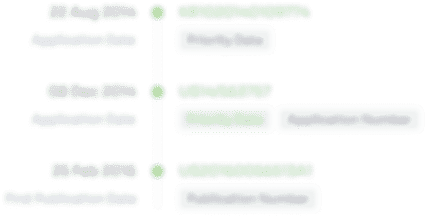Typical of conventional
web handling subsystems are heavy frame structures, precision-designed components, and complex and costly alignment procedures for precisely adjusting substrate transport between components and subsystems.
The problem of maintaining precise and repeatable web registration and transport becomes even more acute with the development of high-resolution non-contact printing, such as high-volume
inkjet printing.
Variability in ink or other liquid amounts and types and in
drying time can cause substrate stiffness and tension characteristics to vary dynamically over a range for different types of substrate, contributing to the overall complexity of the substrate handling and registration challenge.
Problems with such a conventional approach include significant cost in design,
assembly, and adjustment and alignment of
web handling components along the media path.
While such a conventional approach may allow some degree of
modularity, it would be difficult and costly to expand or modify a
system with this type of design.
Each “module” for such a
system would itself be a complete printing apparatus, or would require a complete, self-contained subassembly for paper transport, making it costly to modify or extend a printing operation, such as to add one or more additional colors or
processing steps, for example.
It would be difficult and costly to employ such a solution with a print medium whose stiffness and tension vary during printing, as described above.
Other solutions for web (or belt as referred to above) steering are similarly intended for endless webs in electrophotographic equipment but are not readily adaptable for use with paper media.
Steering using a surface-contacting roller, useful for low-speed photographic printers and taught in commonly assigned U.S. Pat. No. 4,795,070 entitled “
Web Tracking Apparatus” to Blanding et al. would be inappropriate for a surface that is variably wetted with ink and would also tend to introduce non-uniform tension in the cross-track direction.
Other solutions taught for photographic media, such as those disclosed in commonly assigned U.S. Pat. No. 4,901,903 entitled “Web Guiding Apparatus” to Blanding are well suited to photographic media moving at slow to moderate speeds but are inappropriate for systems that need to accommodate a wide range of medias, each with different characteristics, and transport each
media type at speeds of hundreds of feet per minute.
While conventional solutions such as these may work successfully for
magnetic tape, however, these approaches fail to meet the needs of a print media handing
system.
Close spacing between edge guides is possible with
magnetic tape, allowing precise registration at high transport speeds; however, with paper and other print substrates, dimensional requirements make such tight control unworkable using closely spaced edge guides.
Conventional solutions for handling continuous web print media have also been found to be poorly suited for high-speed non-contact printing applications.
For example, commonly assigned U.S. Pat. No. 5,397,289 entitled “Gimballed Roller for Web Material” to Entz et al. describes a gimbaled roller that positions itself automatically with respect to a moving web, but applies edge guidance along both edges, providing over-constraint not desirable for a kinematic web
handling system.
This type of solution works well for
photographic paper, which has a relatively high cross-track stiffness and relatively
narrow range of widths, but is not readily adaptable for print media that can be several times as wide as photographic print paper and, unlike photographic media, may have a broad range of stiffness and thickness characteristics.
Among problems with conventional web guides of these types are high parts count and
assembly cost, complex mechanical constraint profiles, media handling problems due to localized nip pressure, and relatively high cost.
This can transmit a force through the paper onto the web support means, potentially damaging the web or smudging any colorant or other
coating that may already be imprinted on the web surface.
A conventional urging roller can also place a non-uniform drag on the paper due to a force imbalance between the edge and nip forces.
It can also be difficult to accommodate large variations in paper width while maintaining center justification with this approach.
Unfortunately, performance problems that may be inherent to various types of conventional web media edge guides and may not
impact some types of systems become increasingly more pronounced as
web transport speeds increase.
While problems such as non-uniform drag and tendency to stray from center justification can be corrected to some degree with slower moving
web transport systems, these problems are accentuated where high
web transport speeds exceed 100 feet per minute.
Difficulties of this type become even further complicated when
system requirements allow for a range of media widths and types, having various stiffness, thickness,
surface smoothness, and other characteristics, and when some of these characteristics can change dynamically, such as with the amount of applied ink or other fluids.
 Login to View More
Login to View More  Login to View More
Login to View More